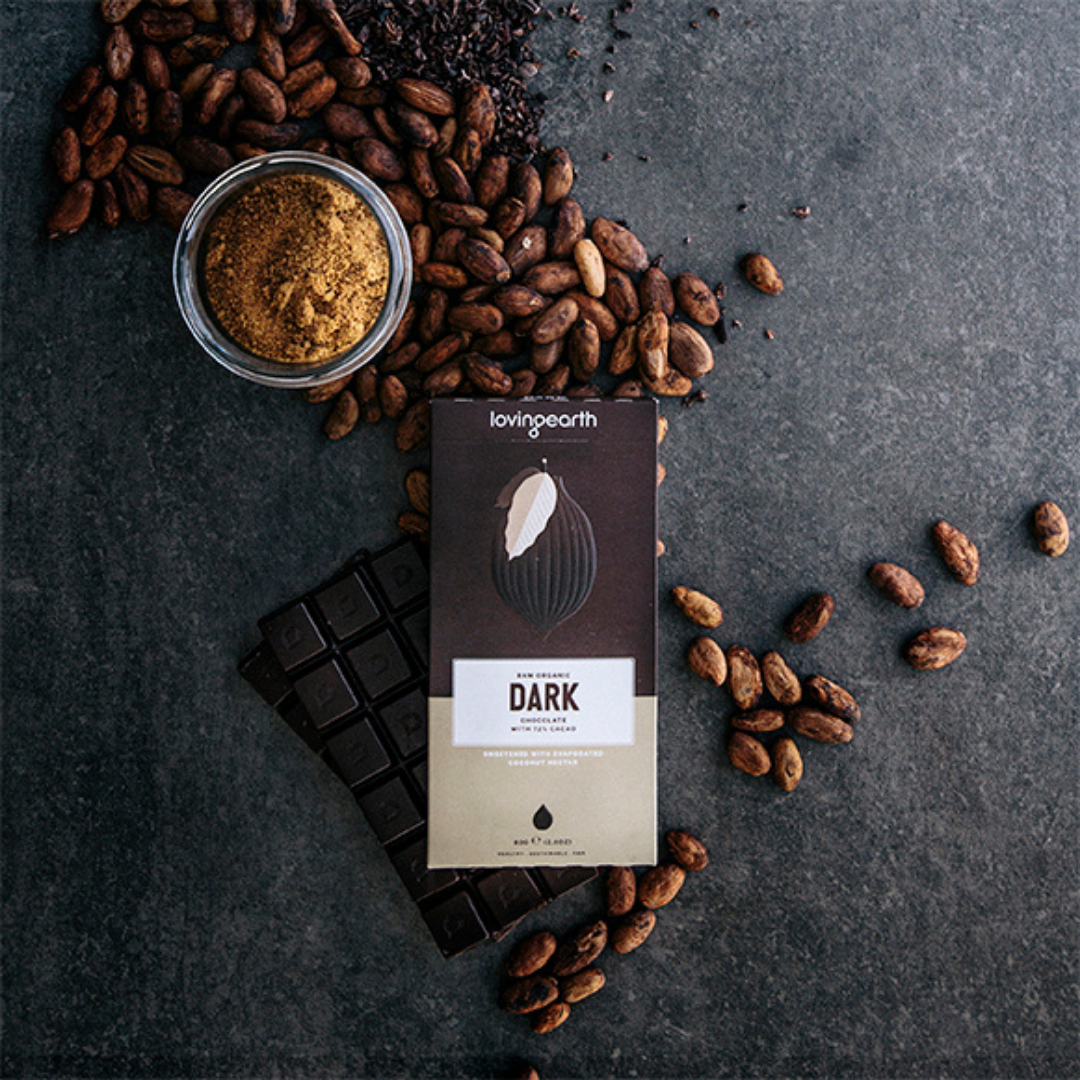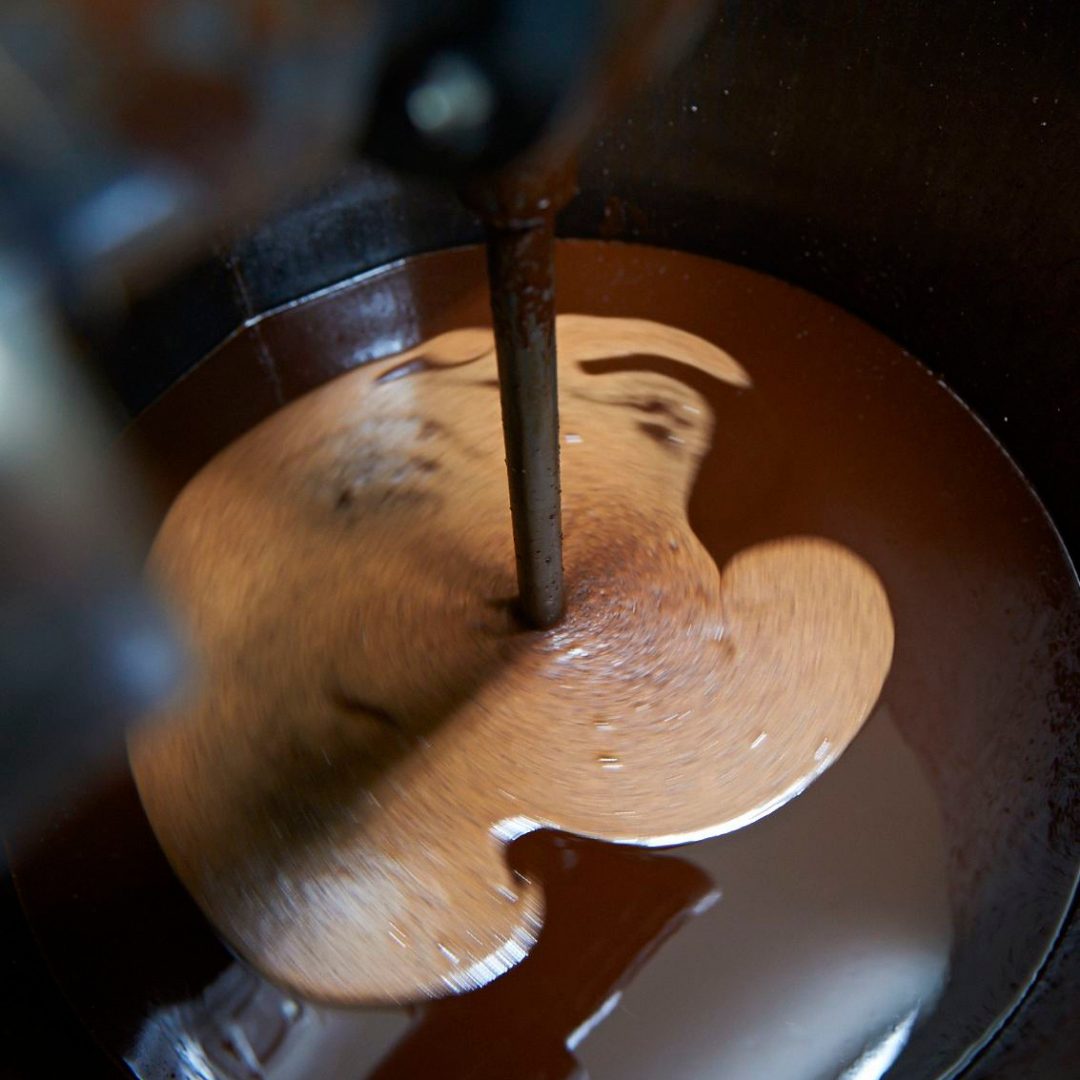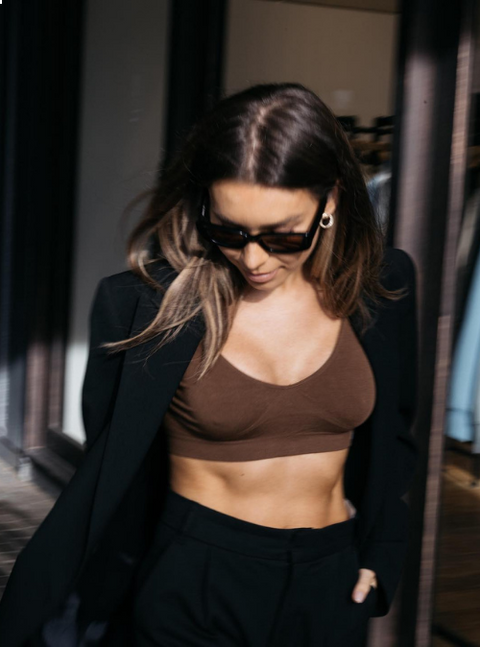July 7th is World Chocolate Day — one of our favourite days of the year, so naturally this calls for a chocolate celebration! Take your pick.
This year, we spoke to Loving Earth who make their bean-to-bar chocolate from the cacao bean itself. Unlike a lot of commercial cacao crops, that have a troubling history of child slave labour, Loving Earth’s cacao has been grown by the Ashaninka community, in the remote forest at the source of the Amazon River in Peru — the place where cacao originated. Pretty cool right?’
If you're interested in their chocolate production process, keep reading! This blog will take you through how they go from sourcing raw cacao, all the way to producing a completed chocolate bar! It gives us serious Charlie And The Chocolate Factory vibes to say the least!
From Bean To Bar
When we see chocolate we don't really stop to think about how it's made. Generally, we get a bit too excited, rip straight into the packaging and indulge in the perfect moment. It's not until after we have finished the chocolate, that the guilt might sink in and we start to wonder about the ingredients and where they're from.
This is where Loving Earth steps in. They truly care about where the chocolate comes from, how it's made and it's nutritional value, so you don't have to.
Unlike roasting cacao (strong taste) and conventional cacao (bitter), Loving Earth works with aromatic varieties of cacao (complex in flavour and fuller on the palate). This ultimately guided their decision to use raw cacao beans to create their chocolate.
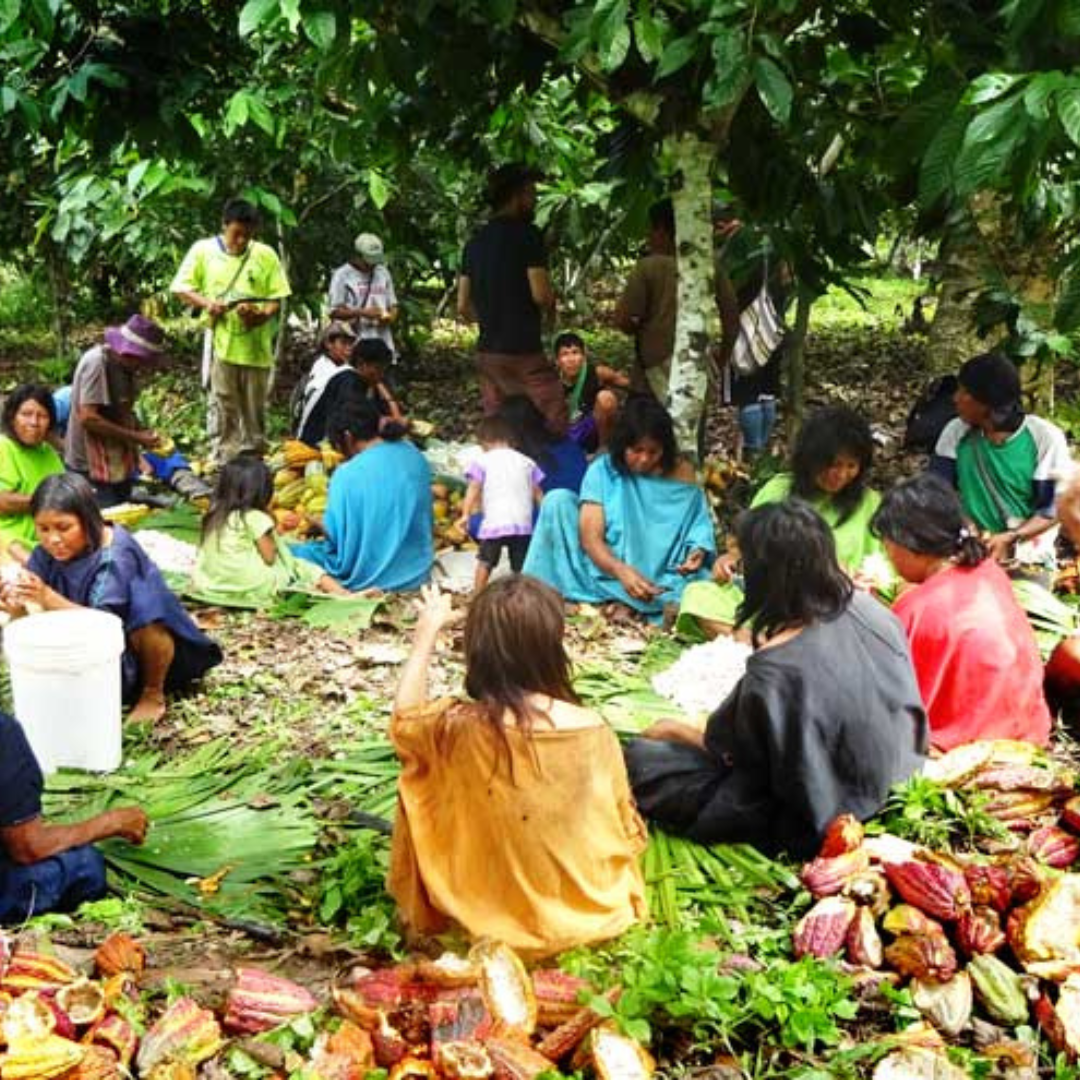

Image: Loving Earth
Sourcing Beans + Harvest
So what's first? Sourcing wild Criollo Cacao beans and harvesting. This is grown and done by the Ashaninka communities that make up the Kemito Ene cacao cooperative in the Rio Ene region of the Peruvian Amazon.
The beautifully coloured heirloom cacao pods are harvested from the trees, cracked open and the beans and pulp are removed from the pod.
We found it super interesting to know that the whole community comes together to harvest the cacao — a real team effort!


Image: Loving Earth
Fermentation + Drying
Next, the beans and pulp are fermented before they're sun and air dried in specially made wooden platforms with clear perspex roofs to allow the sunlight in.
The fermentation process creates the aroma, bold flavours and rich colour of the chocolate you eat. It's equally important they dry effectively, to reduce moisture content and water activity.
Once dried, they travel anywhere up to 100km by canoe down Rio Ene to Puerto Ocopa where the nearest road is. The beans are then transported over the Andes to Lima and shipped to us in Australia.
Winnowing + Conching
When the Loving Earth team receives the beans they disinfect them with certified organic disinfectant and dry them in their temperature controlled commercial dehydrators.
After that they winnow the beans into nibs, which simply means cracking the beans and separating the skin from the inner part of the bean, which is called the nib.
Next, they conch the nibs with their wholefood ingredients for hours to give the chocolate its silky texture that we all know and love. They use nuts to create their creamy bases and add essential oils and wholefood powders to flavour their chocolate. Pretty interesting!
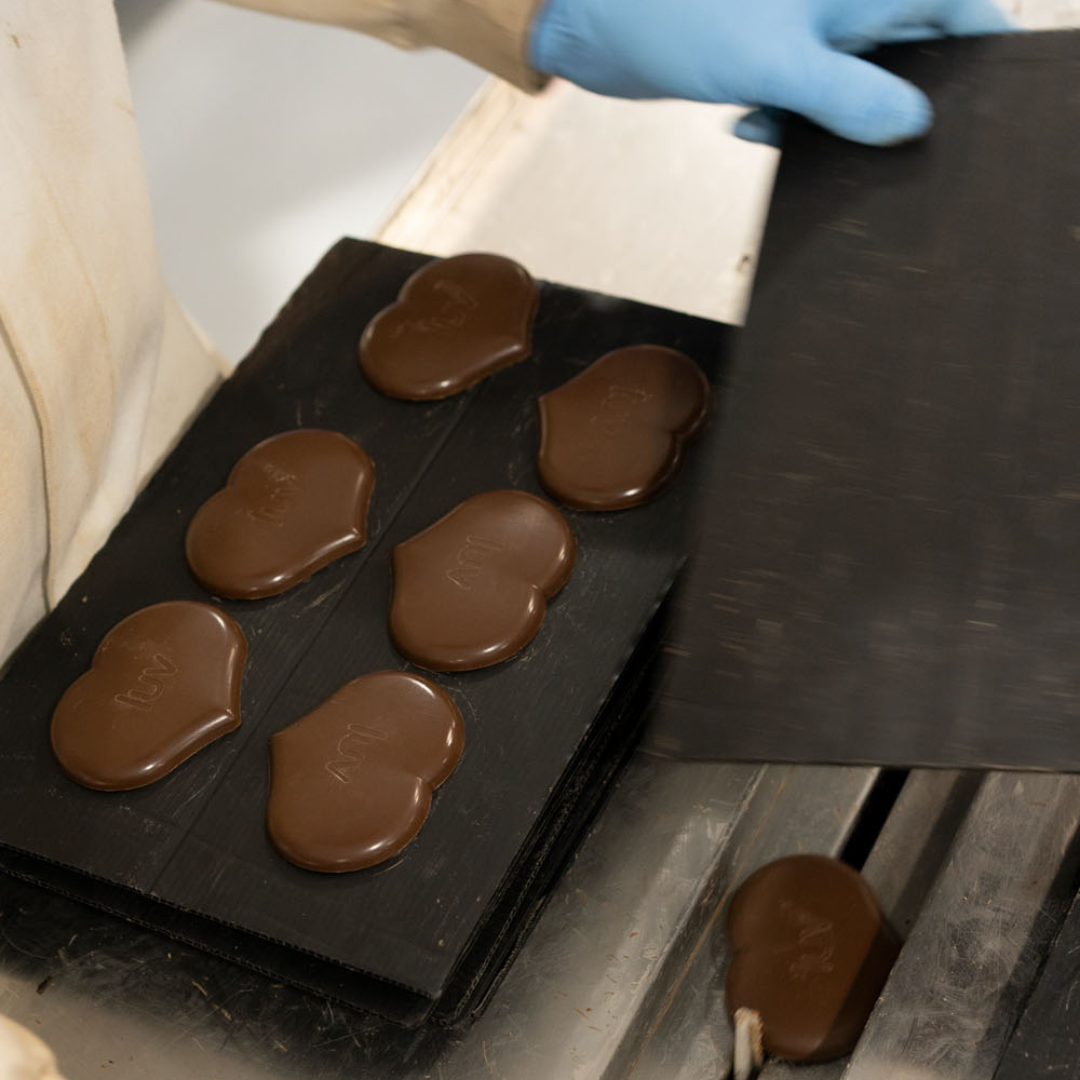

Image: Loving Earth
Tempering + Pouring
Once all the extras have been added, the chocolate is tempered using controlled temperatures to give it a smooth texture and a nice snap. It’s then poured into moulds and cooled. We especially love their luv heart moulds — super cute! For your reference, these are the 30g packets.
Fun fact: proper tempering keeps the chocolate from easily melting on your fingers. We may love chocolate, but the less mess the better! So we're super grateful for Loving Earth's attention to detail here.
Some of our fave flavours include: Lemon Cheesecake (calling all cheesecake lovers), Salted Caramel and Mint.
Compostable Packaging
Last but not least, we can't forget about the packaging. Here at F&F, we love bringing you better alternatives and Loving Earth's Chocolate is no exception.
Their chocolate is wrapped in home compostable wrappers made from sustainably managed plant sources. The chocolate boxes are made from 97% post-consumer recycled fibre and everything is printed with vegetable inks. How good! You can enjoy your choccies even more, knowing they are better for the planet.
Inspiring conscious, healthy and sustainable living is what Loving Earth is all about. Producing ethical, delcious chocolate from raw cacao is how they make that vision a reality! We loved learning about Loving Earth's bean to bar process and hope you did too.
If you want to have a go at making your own chocolate, it doesn't have to be as complicated — Cacao Butter, coconut oil, cacao powder, coconut milk powder and salt is a good place to start. Mix all together and add any nuts, Protein Powders and food flavourings you like.
You can always jump over to our Recipes page for some chocolate inspiration too!

